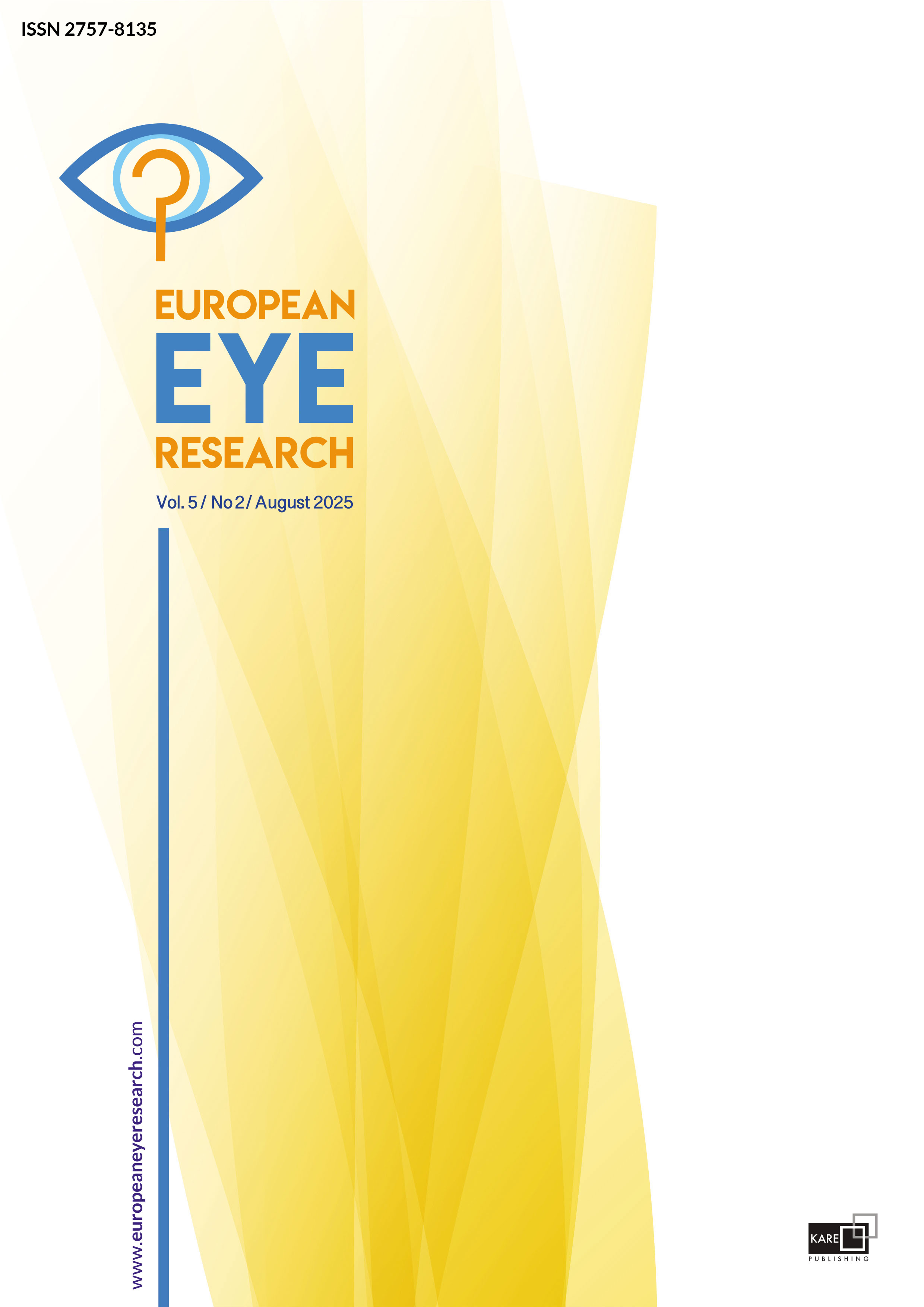

Investigation of subtypes of diabetic macular edema refractory to anti-VEGF treated with a single-dose dexamethasone implant
Ayna Sariyeva Ismayilov, Burcu Kahkeci, Ahmet Metin Kargin, Mahmut Oguz UlusoyDepartment of Ophthalmology, Bursa Yuksek Ihtisas Training and Research Hospital, Bursa, TürkiyePURPOSE: The purpose of this study was to evaluate the subtypes of diabetic macular edema refractory to vascular endothelial growth factor (anti-VEGF) treated with a single-dose dexamethasone (DEX) implant.
METHODS: In this retrospective study, 81 patients (118 eyes) with diabetic macular edema refractory to anti-VEGF treated with a single injection of DEX implant were evaluated. Diabetic macular edema was classified into four subtypes: Diffuse macular edema (DME) (n=36 eyes), cystoid macular edema (CME) (n=40 eyes), serous retinal detachment (SRD) (n=20 eyes), and cystoid macular degeneration (CMD) (n=22 eyes). Best-corrected visual acuity (BCVA) and central macular thickness (CMT) changes in 2, 4, and 6 months were examined.
RESULTS: The baseline BCVA was significantly lower in CMD eyes compared with the CME eyes (p=0.005). The baseline CMT was significantly lower in CME eyes compared with CMD (n=0.002) and DME eyes (n=0.014). After the intravitreal DEX implant, BCVA increased significantly in the 2nd month in the SRD eyes (p=0.045), in the 4th month in the DME eyes (p=0.038), and in the 6th month in the CME eyes (p=0.014). BCVA changes in CMD eyes were not statistically significant for all months (p>0.05). The mean CMT of all groups decreased significantly in the 2nd month (p<0.001 for all). ΔCMT at 2 months was −231.20±221.12 µm in the SRD group, −112.97±141.02 µm in the CME group, −312.66±175.56 µm in the CMD group, and −190.77±173.04 µm in the DME group (p<0.001). According to post hoc Bonferroni analysis, ΔCMT was statistically significantly higher in CMD eyes than in CME eyes (p<0.001).
CONCLUSION: Different subtypes of diabetic macular edema suggest different etiopathogenesis and drug responses. The eyes with the fastest onset of both morphological and functional improvement of intravitreal DEX implant were eyes with SRD. Although anatomical improvement began early in CME and DME eyes (2nd month), functional recovery begins later (4th and 6th month). The eyes with the least functional recovery were the eyes with CMD.
Keywords: Best-corrected visual acuity, central macular thickness, cystoid macular degeneration, cystoid macular edema, diffuse macular edema, serous retinal detachment.
Manuscript Language: English



